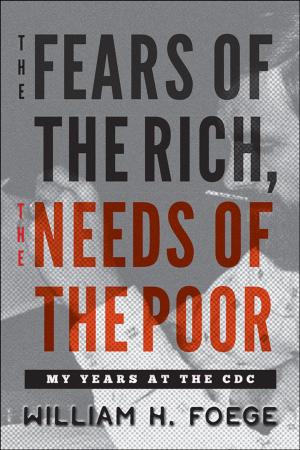Murder and the Making of English CSI
Nonfiction, Reference & Language, Law, Forensic Science, Health & Well Being, Medical, Reference, History| Author: | Ian Burney, Neil Pemberton | ISBN: | 9781421420417 |
| Publisher: | Johns Hopkins University Press | Publication: | October 4, 2016 |
| Imprint: | Language: | English |
| Author: | Ian Burney, Neil Pemberton |
| ISBN: | 9781421420417 |
| Publisher: | Johns Hopkins University Press |
| Publication: | October 4, 2016 |
| Imprint: | |
| Language: | English |
Crime scene investigation—or CSI—has captured the modern imagination. On television screens and in newspapers, we follow the exploits of forensic officers wearing protective suits and working behind police tape to identify and secure physical evidence for laboratory analysis. But where did this ensemble of investigative specialists and scientific techniques come from?
In Murder and the Making of English CSI, Ian Burney and Neil Pemberton tell the engrossing history of how, in the first half of the twentieth century, novel routines, regulations, and techniques—from chain-of-custody procedures to the analysis of hair, blood, and fiber—fundamentally transformed the processing of murder scenes. Focusing on two iconic English investigations—the 1924 case of Emily Kaye, who was beaten and dismembered by her lover at a lonely beachfront holiday cottage, and the 1953 investigation into John Christie’s serial murders in his dingy terraced home in London’s West End—Burney and Pemberton chart the emergence of the crime scene as a new space of forensic activity.
Drawing on fascinating source material ranging from how-to investigator handbooks and detective novels to crime journalism, police case reports, and courtroom transcripts, the book shows readers how, over time, the focus of murder inquiries shifted from a primarily medical and autopsy-based interest in the victim’s body to one dominated by laboratory technicians laboring over minute trace evidence. Murder and the Making of English CSI reveals the compelling and untold story of how one of the most iconic features of our present-day forensic landscape came into being. It is a must-read for forensic scientists, historians, and true crime devotees alike.
Crime scene investigation—or CSI—has captured the modern imagination. On television screens and in newspapers, we follow the exploits of forensic officers wearing protective suits and working behind police tape to identify and secure physical evidence for laboratory analysis. But where did this ensemble of investigative specialists and scientific techniques come from?
In Murder and the Making of English CSI, Ian Burney and Neil Pemberton tell the engrossing history of how, in the first half of the twentieth century, novel routines, regulations, and techniques—from chain-of-custody procedures to the analysis of hair, blood, and fiber—fundamentally transformed the processing of murder scenes. Focusing on two iconic English investigations—the 1924 case of Emily Kaye, who was beaten and dismembered by her lover at a lonely beachfront holiday cottage, and the 1953 investigation into John Christie’s serial murders in his dingy terraced home in London’s West End—Burney and Pemberton chart the emergence of the crime scene as a new space of forensic activity.
Drawing on fascinating source material ranging from how-to investigator handbooks and detective novels to crime journalism, police case reports, and courtroom transcripts, the book shows readers how, over time, the focus of murder inquiries shifted from a primarily medical and autopsy-based interest in the victim’s body to one dominated by laboratory technicians laboring over minute trace evidence. Murder and the Making of English CSI reveals the compelling and untold story of how one of the most iconic features of our present-day forensic landscape came into being. It is a must-read for forensic scientists, historians, and true crime devotees alike.















